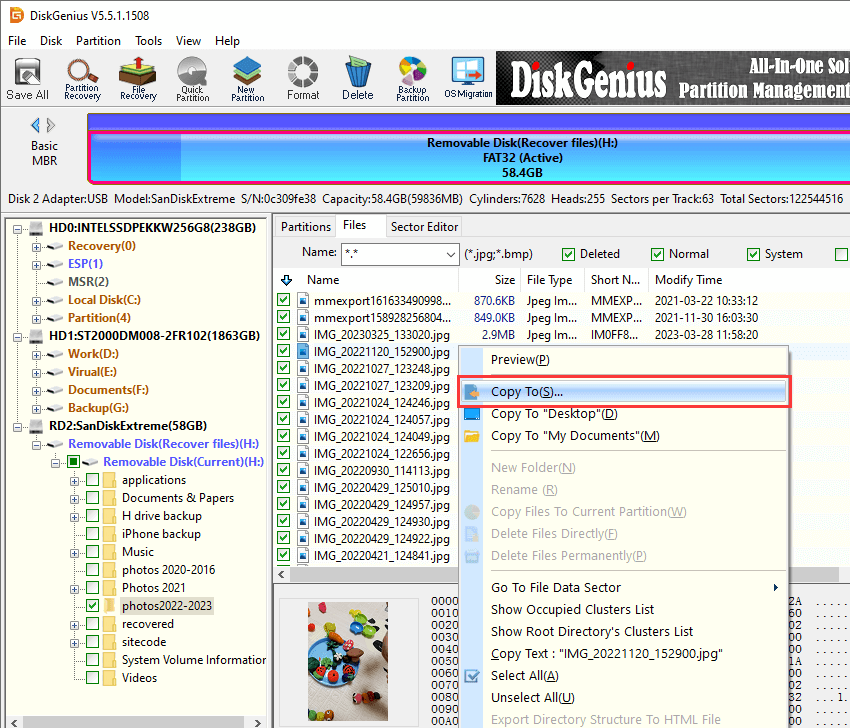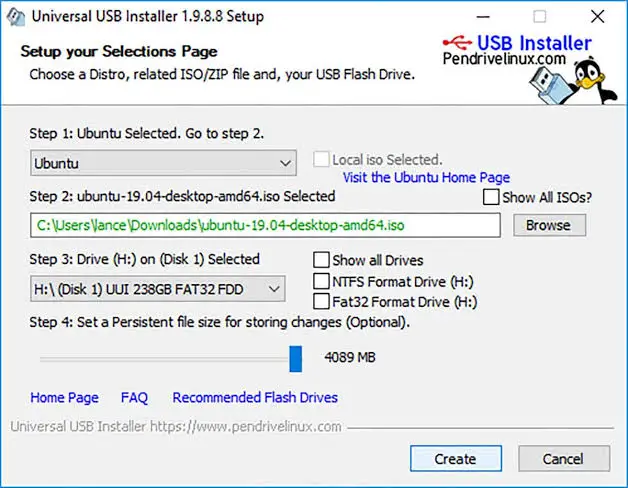

- Universal usb installer format ext4 install#
- Universal usb installer format ext4 full#
- Universal usb installer format ext4 windows 10#
- Universal usb installer format ext4 code#
- Universal usb installer format ext4 Pc#
Universal usb installer format ext4 Pc#
All you need is any PC with the boot from USB capability and 128+ Megabytes of RAM.
Universal usb installer format ext4 full#
But having the full installation running from a USB flash drive that acts like a hard drive is the difference. The operation has completed successfully.The Linux live CD or USB stick is not hot news. The new table will be used at the next reboot or after you Warning: The kernel is still using the old partition table. OK writing new GUID partition table (GPT) to /dev/sdb. Toggle which attribute field (0-63, 64 or to exit):įinal checks complete.
Universal usb installer format ext4 code#
Hex code or GUID (L to show codes, Enter = 8300): 0700Ĭhanged type of partition to 'Microsoft basic data'Īttribute value is 0000000000000000. This option deletes all partitions and creates a new protective MBR.įirst sector (34-123404254, default = 2048) or : $ sudo gdisk /dev/sdb # You might want to use a different diskįound valid GPT with protective MBR using GPT. You will loose all data you had previously stored on this particular device. Note that these are instructions to format the disk. Partition one will be visible to Windows, partition two will be hidden. This is how you would partition an empty disk at /dev/sdb with two partitions. From the looks of it, Microsoft chose to ignore attributes on partitions with non-Microsoft partition types. You can do steps two and three in any order, but step two seems to be necessary. Add the "hidden" attribute to that partition (as suggested here).Set the partition type of your Linux partitions to "Microsoft basic data".) by default, so there is definitely some way to mark a partition such that Windows ignores it.
Universal usb installer format ext4 windows 10#
The problem is that Windows 10 has changed from ignoring a second partition with the linux ext4 file system to prompting the user the format it.Īt the same time, it seems like your standard Windows computer ships with hidden partitions (efi, recovery. But Windows does not prompt the user the format it. The content will be available via the mount point /mnt/lp1, which means that you and an end user can read and write files and directories, just like an ext4 file system in a partition. I assume that you already create a structure of directories, ownerships and permissions in the ext4 partition, and the same structure should work in this ext4 file too. Or maybe you would prefer something like this, sudo mount -o defaults,users,loop /mnt/sd1/linux-fs /mnt/lp1 In order to use the file in linux, loop mount it (you can provide a script or desktop file for the end users), sudo mount -o loop /mnt/sd1/linux-fs /mnt/lp1 sudo dd if=/dev/zero of=/mnt/sd1/linux-fs bs=1M count=8KĬreate an ext4 file system in the file sudo mkfs.ext4 /mnt/sd1/linux-fs The following command line will make an empty file with the size (bs * count, in this case 1MiB*8KiB) = 8GiB. In the FAT32 file system the maximum file size 4 GB, but in NTFS and UDF, the size is limited by the size of the partition. Where x is the drive letter and n is the partition number.Ĭreate a file. Mount the partition, where you intend to create the file. This method is the same as for a casper-rw file for persistence.Ĭreate mount points (only once) sudo mkdir -p /mnt/lp1 I don't think that Windows will bother to look in the file. If you must have ext4, you can put it in a file and loop mount to use it from linux. So it is important to backup the content regularly, so that the content is not lost, if the file system gets damaged.Ģ. Check and double check that everything is correct before you press the Enter key!īut it might be difficult to find good tools to repair UDF. Where x is the drive letter and n is the partition number. Check and double check that everything is correct before you press the Enter key to run the dd command line!Ĭreate UDF file system (risky!) sudo mkudffs -b 512 -media-type=hd -lvid=my-label /dev/sdxn
Universal usb installer format ext4 install#
Install udftools if necessary sudo apt-get install udftoolsĬreate a partition table with gparted or gnome-disksĮrase confusing data with dd (risky!) sudo dd if=/dev/zero of=/dev/sdxn bs=1M count=1 # wipe first MiB It is even possible to use UDF in the casper-rw partition of a persistent live drive, illustrated by the following screenshot of Lubuntu 16.04.1 LTS,

Full compatibility with Linux, Windows and MacOS, scroll down to 'UDF'.Windows 10 does not prompt the user to format UDF, the Universal Disk Format.The problem is that Windows 10 has changed from ignoring a second partition with the linux ext4 file system to prompting the user the format it.UDF can replace ext4 to protect a partition with linux style


 0 kommentar(er)
0 kommentar(er)
